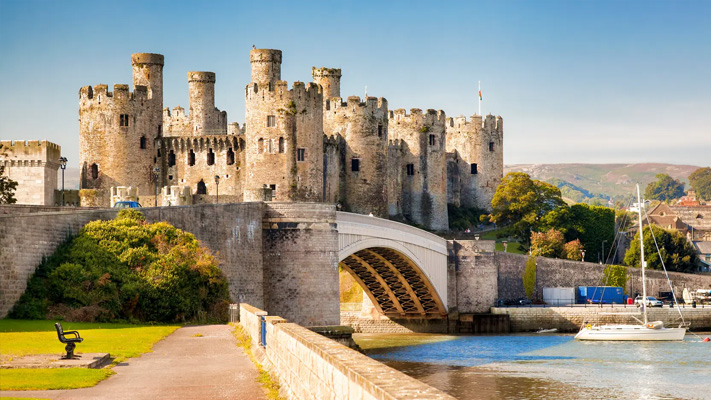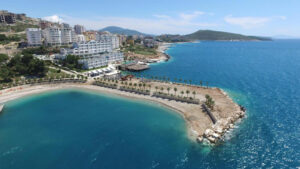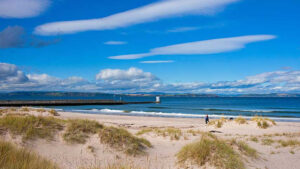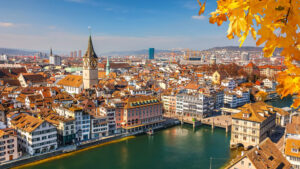WALES, GREAT BRITAIN – A LAND OF RUGGED BEAUTY AND WARM HOSPITALITY

Wales is a popular tourist destination that offers a unique mix of ancient history, stunning landscapes, and modern culture. From the rugged coastline of Pembrokeshire to the majestic peaks of Snowdonia, there is something for every type of traveler in Wales.

One of the biggest draws for tourists in Wales is its rich history and culture. The country is home to numerous historic castles, including Cardiff Castle, Conwy Castle, and Caernarfon Castle, that offer visitors a glimpse into Wales’ past. Additionally, Wales has a strong tradition of music, poetry, and literature, which can be experienced at events such as the National Eisteddfod of Wales.
Outdoor enthusiasts will also find plenty to enjoy in Wales. The country is known for its hiking trails, including the famous Wales Coast Path, which stretches over 870 miles around the country’s coastline. Other popular outdoor activities include mountain biking, kayaking, and surfing.
Food and drink are also a highlight of a trip to Wales. The country has a growing food and drink scene, with a focus on locally-sourced and sustainable ingredients. Visitors can sample traditional Welsh dishes such as Welsh rarebit, lamb cawl, and bara brith, as well as locally-produced beers, ciders, and whiskies.
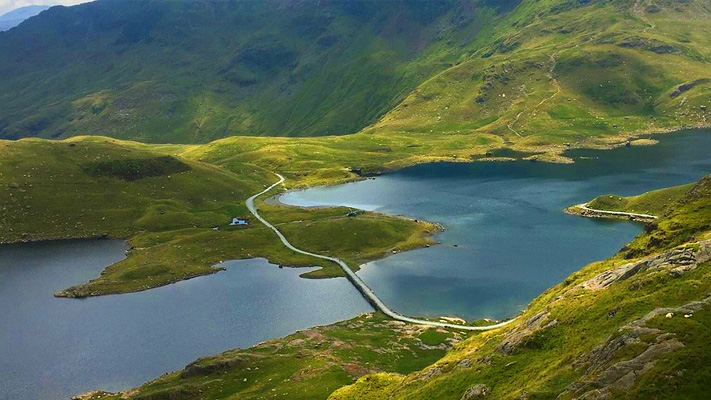
Interesting Facts
Here are some interesting facts about Wales:
- The Welsh language has the longest place name in Europe, which is Llanfairpwllgwyngyllgogerychwyrndrobwllllantysiliogogogoch. It means “St. Mary’s Church in the hollow of the white hazel near a rapid whirlpool and the Church of St. Tysilio of the red cave.”
- Wales has its own patron saint, St. David, who is celebrated on March 1st every year.
- The national symbol of Wales is the dragon, which is featured on the country’s flag.
- Wales has the world’s largest underground zip line course, which is located in a disused slate mine in the Snowdonia National Park.
- The highest mountain in Wales is Snowdon, which stands at 1,085 meters (3,560 feet).
- The Welsh flag was granted official status in 1959, making it one of the world’s oldest national flags.
- The town of Hay-on-Wye in Wales is known as the “town of books” and is home to over 30 bookstores and an annual literary festival.
- The oldest tree in Wales is the Llangernyw Yew, which is estimated to be over 4,000 years old.
- Wales is the only country in the world with a national coastal path that covers the entire coastline, which is over 1,400 kilometers (870 miles) long.

What makes it a Popular Tourist Destination
Wales is a popular tourist destination for several reasons, including:
- Natural beauty: Wales is known for its stunning natural landscapes, which include rugged coastlines, rolling hills, and majestic mountains. The country is home to three national parks, which offer visitors a range of outdoor activities such as hiking, biking, and wildlife watching.
- Rich history and culture: Wales has a rich cultural heritage, with a distinctive Welsh language, traditional music and dance, and a range of historical landmarks such as castles, churches, and museums.
- Food and drink: Welsh cuisine is becoming increasingly popular, with traditional dishes such as Welsh rarebit, cawl, and bara brith gaining wider recognition. Welsh whiskey, beer, and cider are also becoming more widely available.
- Adventure activities: Wales is home to a range of adventure activities, including zip lining, coasteering, surfing, and mountain biking. These activities offer visitors the chance to experience Wales’ rugged landscapes in a unique and exciting way.
- Accessibility: Wales is easily accessible from other parts of the UK and Europe, with good transport links and a range of accommodation options to suit all budgets.
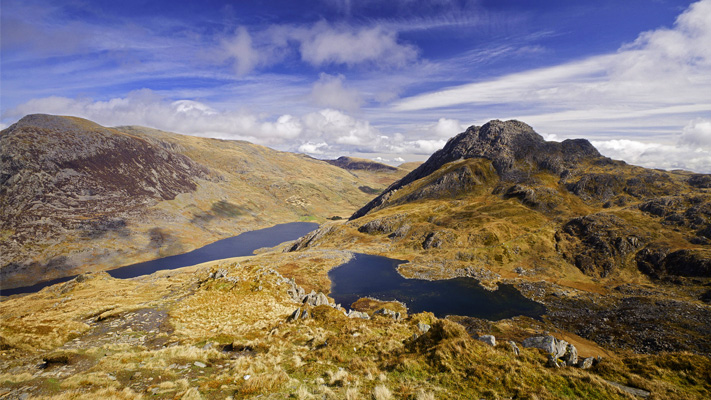
Activities Enjoyed by Tourists
Tourists visiting Wales can enjoy a wide range of activities, including:
- Hiking and walking: Wales has a range of hiking and walking trails, from gentle strolls to challenging mountain hikes. The country’s three national parks – Snowdonia, Pembrokeshire Coast, and Brecon Beacons – offer a range of trails for all abilities.
- Watersports: Wales’ rugged coastline offers plenty of opportunities for watersports, including surfing, paddleboarding, kayaking, and coasteering. The country’s inland waterways, including its lakes and rivers, are also popular for water-based activities such as fishing and boating.
- Cultural experiences: Wales has a rich cultural heritage, with a range of historical landmarks, museums, and cultural festivals to explore. Visitors can explore the country’s many castles, churches, and museums, or attend traditional Welsh music and dance performances.
- Adventure activities: Wales is home to a range of adventure activities, including zip lining, abseiling, bouldering, and mountain biking. These activities offer visitors the chance to experience Wales’ rugged landscapes in a unique and exciting way.
- Wildlife watching: Wales is home to a range of wildlife, including red kites, otters, seals, and dolphins. Visitors can take guided tours or go on their own wildlife spotting adventures in the country’s national parks and other wilderness areas.

Top Attractions and Must Visit Places
There are many places in and around Wales that should not be missed and are popular attractions, including:
- Snowdonia National Park: Located in North Wales, Snowdonia is the largest national park in Wales and is home to the country’s highest mountain, Snowdon. Visitors can hike to the summit of Snowdon or explore the park’s many other trails, waterfalls, and lakes.
- Cardiff: The capital city of Wales, Cardiff is a vibrant city with a rich history and culture. Must-visit attractions include Cardiff Castle, the National Museum Cardiff, and the Millennium Centre.
- Brecon Beacons National Park: Located in South Wales, the Brecon Beacons is a popular destination for hiking, cycling, and outdoor activities. The park is home to Pen y Fan, the highest peak in South Wales.
- Conwy Castle: This 13th-century castle is a UNESCO World Heritage Site and is one of the best-preserved castles in Wales. Visitors can explore the castle’s towers, walls, and chambers and enjoy views of the surrounding countryside.
- Pembrokeshire Coast National Park: Located in West Wales, the Pembrokeshire Coast is a beautiful area of coastline with rugged cliffs, sandy beaches, and picturesque villages. Visitors can enjoy hiking, surfing, or simply relaxing on the beach.
- St. Davids Cathedral: Located in the city of St. Davids, this 12th-century cathedral is a popular destination for visitors interested in history and architecture.
- Portmeirion: This unique Italian-style village in North Wales was created by architect Sir Clough Williams-Ellis in the early 20th century. Visitors can explore the village’s colorful buildings and gardens and enjoy stunning views of the surrounding countryside.
- Llangollen: This picturesque town in North Wales is known for its canal, steam railway, and 14th-century bridge. Visitors can take a canal boat ride, ride on the steam railway, or enjoy a walk along the River Dee.
Best Time to Visit
The best time to visit Wales depends on your interests and what you want to do. Here are some factors to consider:
- Weather: The best time to visit Wales for warm and sunny weather is between June and September. However, be prepared for occasional rain showers even during this time. If you prefer cooler temperatures and fewer crowds, you may want to consider visiting in the spring or fall.
- Events and festivals: Wales hosts a number of events and festivals throughout the year. The Hay Literary Festival in May, the National Eisteddfod of Wales in August, and the Cardiff Christmas Market in December are just a few examples. Check the calendar of events to plan your visit around a festival or event that interests you.
- Outdoor activities: If you plan to hike, cycle, or participate in other outdoor activities, the best time to visit Wales is during the spring or summer months. This is when the weather is most pleasant and the days are longer.
- Cultural experiences: If you are interested in Welsh culture and history, you may want to visit during St. David’s Day on March 1st. This is Wales’ national day and is celebrated with parades and traditional Welsh food and drink.
- Wildlife watching: If you are interested in wildlife watching, the best time to visit Wales is between April and September when many species are active. This is also the best time to see migrating birds and seals along the coast.


